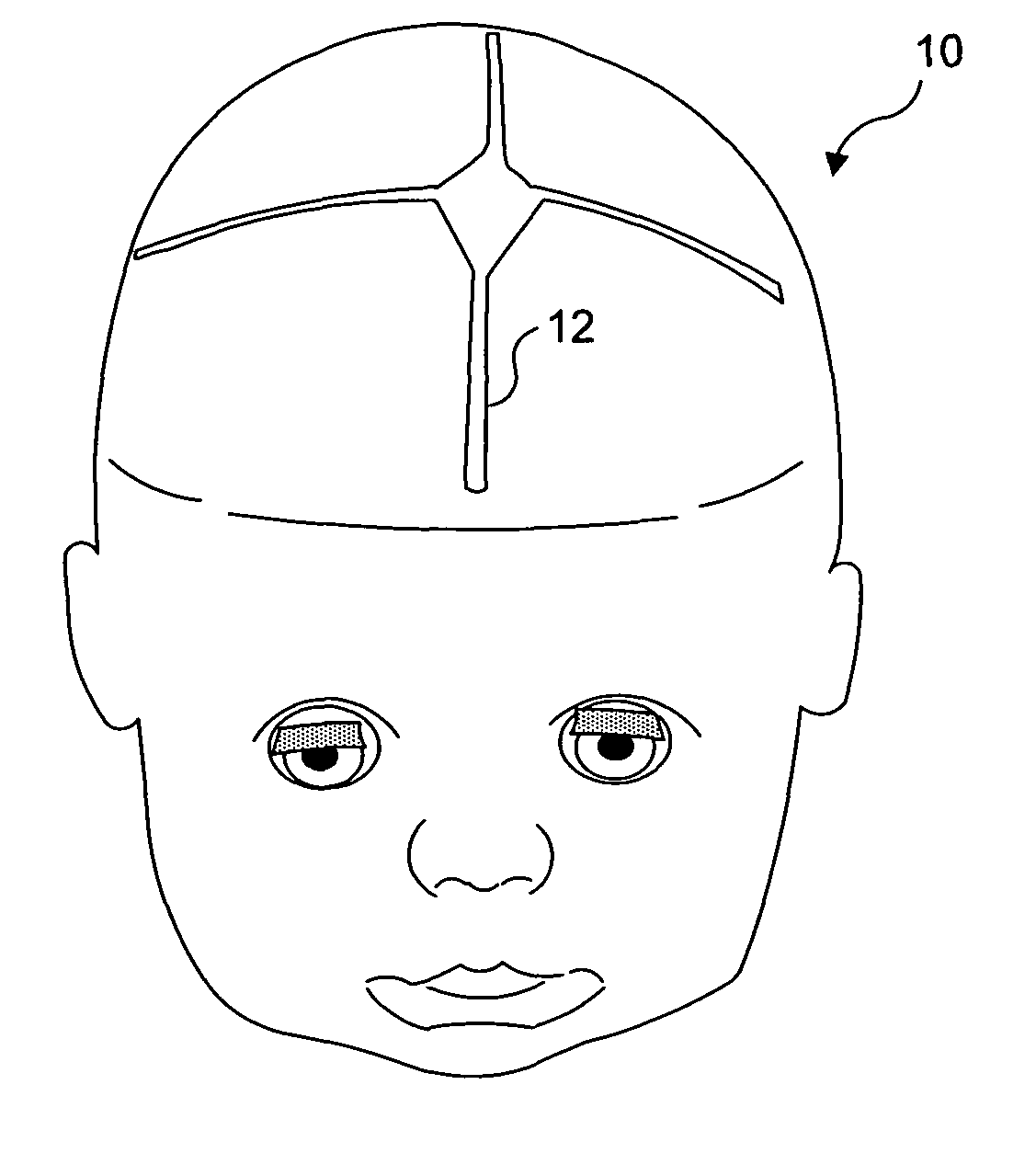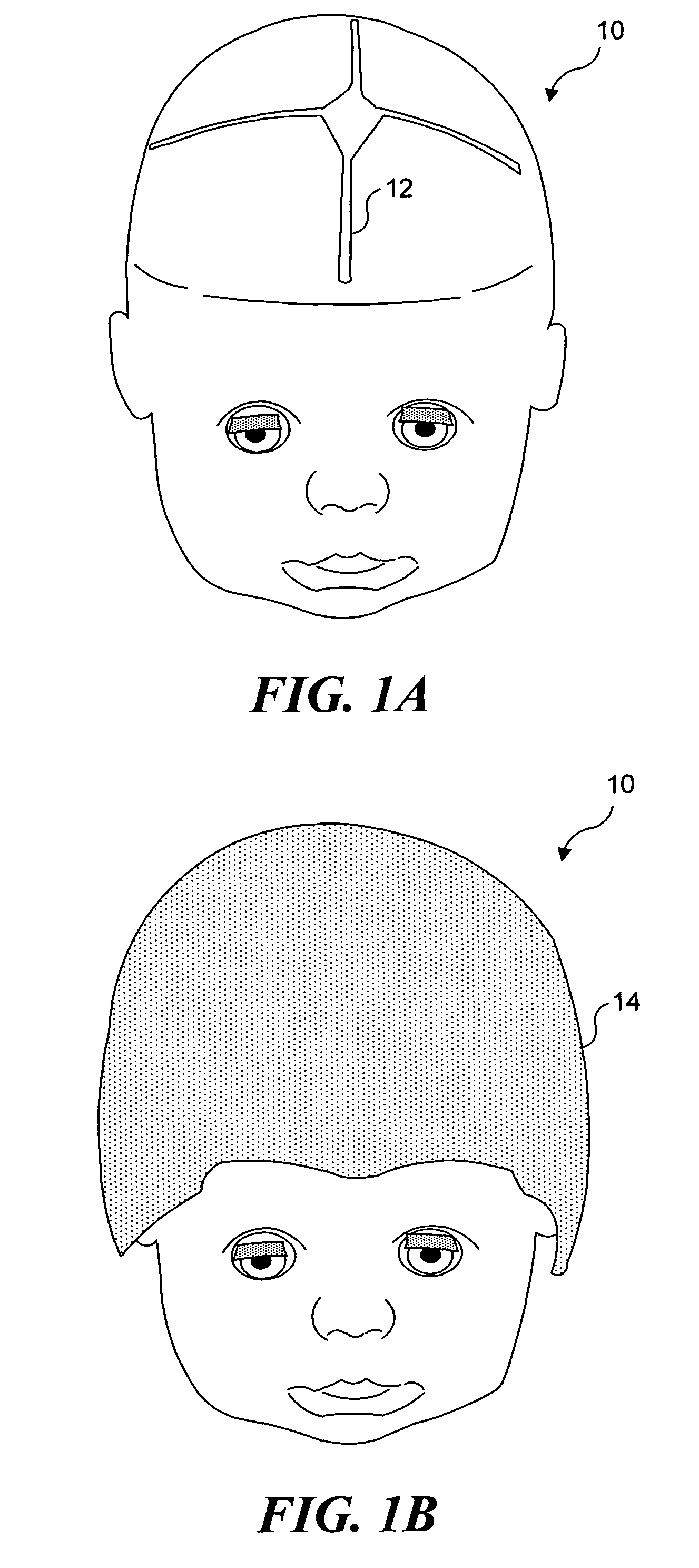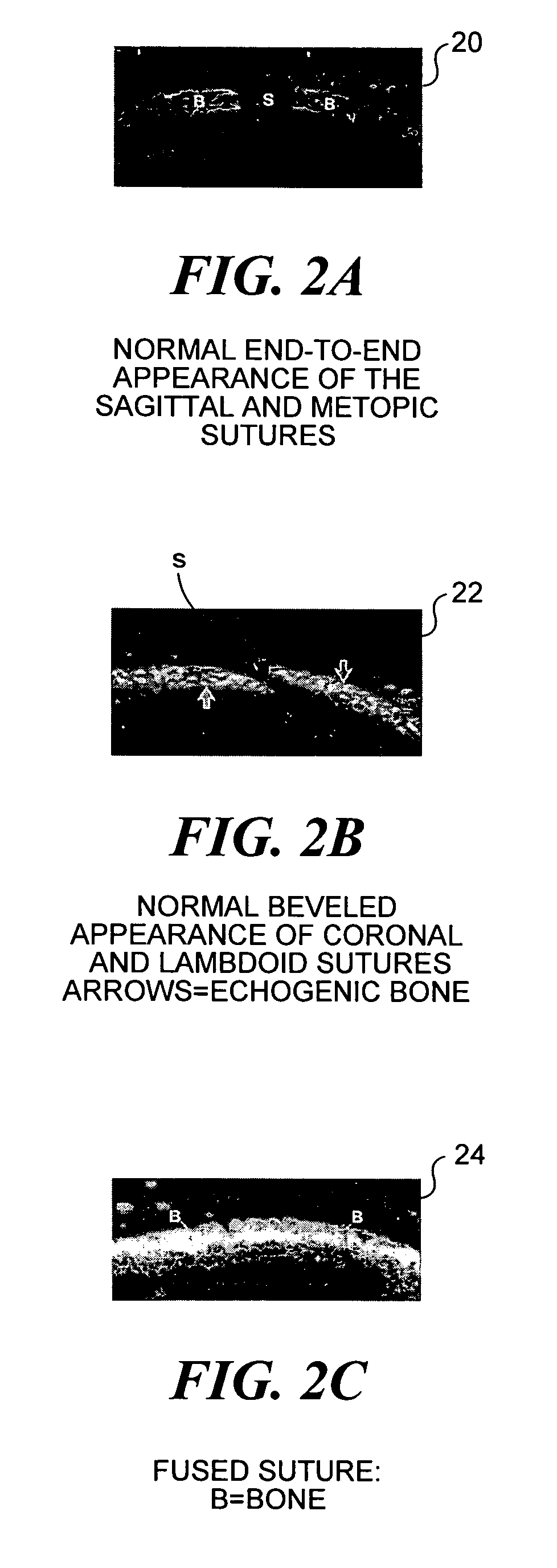Ultrasound simulator for craniosynostosis screening
a craniosynostosis and ultrasound simulator technology, applied in the field of anatomically correct medical models, can solve the problems of not readily available medical training models that can be used to train radiologists and technicians to assess the skull sutures of children with abnormal head shape using ultrasound, and require sedation of young children, etc., to achieve uniform feel and appearance.
- Summary
- Abstract
- Description
- Claims
- Application Information
AI Technical Summary
Benefits of technology
Problems solved by technology
Method used
Image
Examples
Embodiment Construction
[0038]The present invention is an ultrasound simulator that can be used to train radiologists and ultrasound technicians in the anatomy of pediatric cranial sutures and in techniques for using ultrasound as a screening tool to detect craniosynotosis. A life sized model of a human head includes simulated skull sutures that can be detected using ultrasound. Additional aspects of the present invention relate to methods for making and using such a model.
[0039]In the following description and the claims that follow, it will be understood that the term “patent” means a skull suture in which a gap exists between adjacent portions of the skull. Normal skull sutures have such a gap. Abnormal skull sutures are closed, and in the following description and the claims that follow, it will be understood that the term “fused” is employed to refer to such abnormal, or closed, skull sutures. The term “life size” is meant to refer to a model that simulates a portion of human anatomy such that the mod...
PUM
 Login to View More
Login to View More Abstract
Description
Claims
Application Information
 Login to View More
Login to View More - R&D
- Intellectual Property
- Life Sciences
- Materials
- Tech Scout
- Unparalleled Data Quality
- Higher Quality Content
- 60% Fewer Hallucinations
Browse by: Latest US Patents, China's latest patents, Technical Efficacy Thesaurus, Application Domain, Technology Topic, Popular Technical Reports.
© 2025 PatSnap. All rights reserved.Legal|Privacy policy|Modern Slavery Act Transparency Statement|Sitemap|About US| Contact US: help@patsnap.com



